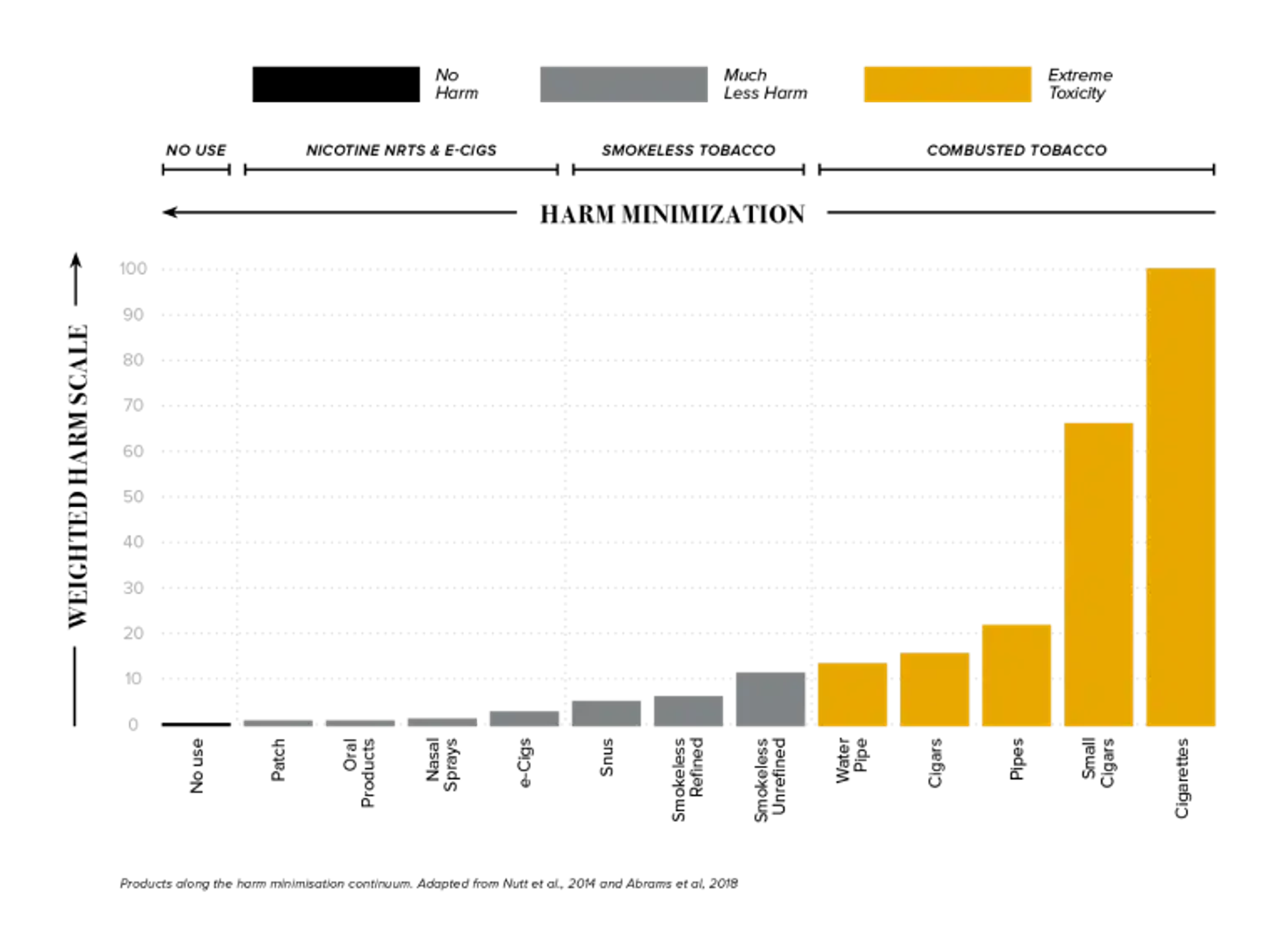
WHAT IS TOBACCO HARM REDUCTION?
Quitting smoking and nicotine completely is clearly the most effective strategy for reducing the harm from smoking.
However, TOBACCO HARM REDUCTION is one of the most exciting opportunities to help prevent tobacco-related disease and premature death. It persuades cigarette smokers who can’t or won’t quit, to switch to a smoke-free, tobacco-free nicotine alternative.
Smoking of cigarettes remains the biggest single cause of noncommunicable deaths in the world. According to the World Health Organization (WHO), it caused eight million deaths in 2017 alone. If current trends persist,another BILLION tobacco-related deaths will occur during the 21st century.
The WHO’s constitution states that “enjoyment of the highest attainable standard of health is one of the fundamental rights of every human being without distinction of race, religion, political belief, economic or social condition”. In the same spirit, tobacco harm reduction is reflected in Article 1(d) of the Framework Convention on Tobacco Control (FCTC). This states that “tobacco control itself means a range of supply, demand and harm reduction strategies that aim to improve the health of a population by eliminating or reducing their consumption of tobacco products and exposure to tobacco smoke.”
What is often misunderstood in harm reduction, is relativity of risk. Harm reduction is practiced to minimise risk in other ways, e.g.:
- Helmet use for motorcycles
- Vaccines to minimise the effect of Covid infections
- Condom use for safe(r) sex
- Clean needles and syringes for drug users in supervised conditions
In THR, the Royal College of Physicians (RCP) states that the hazard to health, arising from long-term vapour inhalation from e-cigarettes, is unlikely to exceed 5% of the harm from smoking tobacco.
With oral nicotine products, there is no vapour, so it is potentially even less harmful. The adjacent graph below illustrates tobacco and nicotine products along the continuum of risk.







